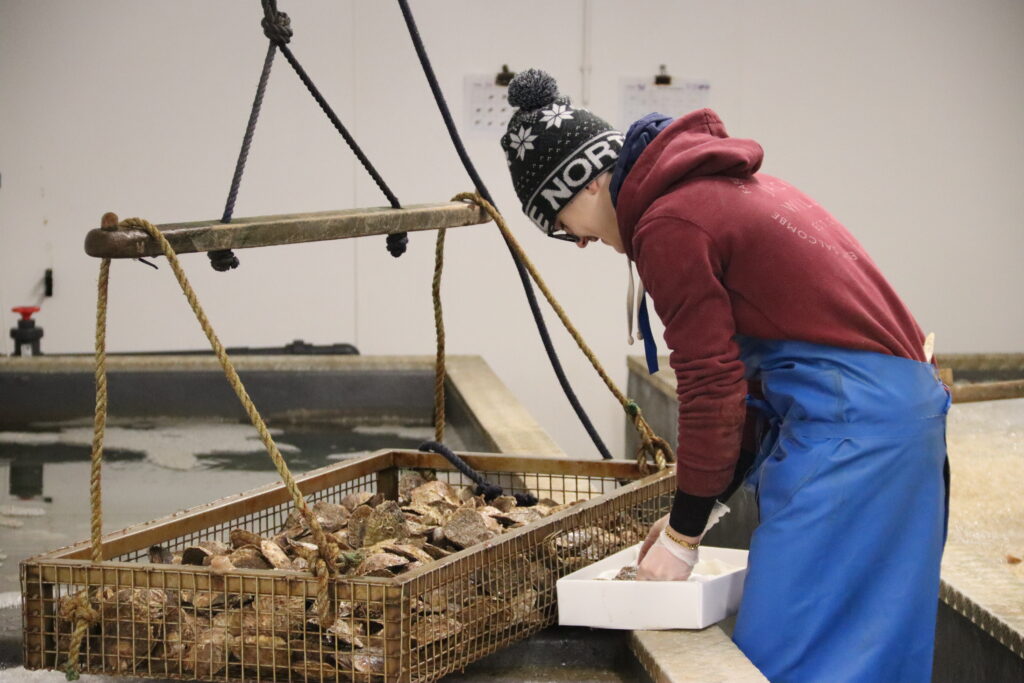- Home
- >
- Guide to seafood industry
- >
- Aquaculture industry
The aquaculture industry
Aquaculture (or fish farming) is the world’s fastest expanding food production industry.

Aquaculture overview
Aquaculture can be a fast, secure and cost effective means of expanding world fish supply. It has the potential to match the shortfall between supply and demand whilst reducing the pressure on wild fisheries.
The aquaculture industry worldwide now produces many species of seafood. Familiar examples include Salmon, Trout, Warmwater Prawn, Sea Bass, Sea Bream, Turbot, Tilapia, Oyster, Scallop and Mussel. There has also been a recent development of commercial scale aquaculture in the UK for some deep sea species such as Cod and Halibut.
Aquaculture falls into three broad areas:
Farming – whereby the whole process is in captivity from breeding of eggs through to growing and harvest.
Sea rearing – where young stocks are caught from the wild and then grown to harvest in a controlled environment, for example, rope grown Mussel.
Sea ranching – where juveniles are bred in captivity and then released into the wild to increase the stock.
Small percentages (2–5%) of the mature stock are then subsequently caught by wild fishermen. There is a good example of this in the Hebridean Lobster Fishery.
In Europe, fish and shellfish farms have to be registered and inspected regularly to check standards of health, hygiene and welfare. Individual farms and their associations are working to raise standards and maintain a healthy environment.
Some current initiatives include:
- Developing and promoting codes of practice to ensure cultivation sites and stocks are well managed.
- Addressing issues relating to the supply of fishmeal and fish oil in aquaculture feeds.
Principles of responsible aquaculture
There are some general principles that apply to any aquaculture farm or site and the work that is done there. See this information on the main Seafish website.
Aquaculture production
Classification of species and farming methods.
Aquaculture species and how they are farmed can be sorted in various ways.
Organisms can be classified depending on where they live – in freshwater, marine waters (salty water), or both – so called Diadromous species.
How a species feeds is another means of classification. Depending on the aquatic animal, the farmer may need to provide food in the form of man-made feed, often in the form of pellets. Most finfish and crustacean species need to be fed. Other organisms like seaweed, shellfish, some fish species such as carp, will absorb dissolved nutrients and/or feed on naturally occurring food, such as plankton, found in the water they’re grown in. Shellfish, for example, filter the water to remove these food particles and are therefore referred to as ‘filter-feeders’.
How many fish or shellfish in an area or volume of water used by the farm – the ‘density of stock’- is also used to classify the farms production. It could be extensive (with low density stocking), semi-intensive, or intensive (high density). The type and intensity of farming depends on the species and on how much we want to buy and eat it. This is known as ‘market demand’.
Generally fish and shellfish are farmed in ponds, tanks, suspended on ropes or poles, or held in nets and cages in freshwater lakes or waters around the coast. Shellfish such as bivalves (those with two hinged shells protecting the fleshy part of the animal) generally don’t move around so they can also be left to grow on the seabed.
There is increasing investment across the world in farming aquatic species, such as salmon or warm water prawns, on land in technologically advanced and bio-secure recirculating aquaculture systems, otherwise known as RAS. It’ll be fascinating to see how this exciting area of seafood production develops in the coming years.
